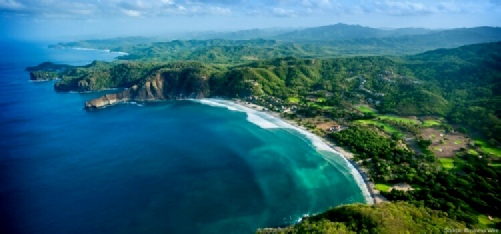




Nicaragua, officially the Republic of Nicaragua (Spanish: About this sound República
de Nicaragua), is the largest country in the Central American isthmus, bordered by
Honduras to the north, the Caribbean to the east, Costa Rica to the south, and the
Pacific Ocean to the west. Nicaragua's capital, Managua, is the country's largest
city and the third-
The Spanish Empire conquered the region in the 16th century. Nicaragua gained independence from Spain in 1821. Since its independence, Nicaragua has undergone periods of political unrest, dictatorship, and fiscal crisis—the most notable causes that led to the Nicaraguan Revolution of the 1960s and 1970s. Nicaragua is a representative democratic republic.
The mixture of cultural traditions has generated substantial diversity in art and literature, particularly the latter given the literary contributions of Nicaraguan poets and writers, including Rubén Darío, Pablo Antonio Cuadra and Ernesto Cardenal. The biological diversity, warm tropical climate and active volcanoes make Nicaragua an increasingly popular tourist destination.
Relative to its overall population, Nicaragua has never experienced any large-
In the 19th century, Nicaragua experienced modest waves of immigration from Europe. In particular, families from Germany, Italy, Spain, France and Belgium immigrated to Nicaragua, particularly the departments in the Central and Pacific region.
Also present is a small Middle Eastern-
Nicaraguan culture has strong folklore, music and religious traditions, deeply influenced
by European culture but also including Amerindian sounds and flavors. Nicaraguan
culture can further be defined in several distinct strands. The Pacific coast has
strong folklore, music and religious traditions, deeply influenced by Europeans.
It was colonized by Spain and has a similar culture to other Spanish-
The Caribbean coast of Nicaragua was once a British protectorate. English is still predominant in this region and spoken domestically along with Spanish and indigenous languages. Its culture is similar to that of Caribbean nations that were or are British possessions, such as Jamaica, Belize, the Cayman Islands, etc. Unlike on the west coast, the indigenous peoples of the Caribbean coast have maintained distinct identities, and some still speak their native languages as first languages.
The Nicaraguan government guarantees universal free health care for its citizens. However, limitations of current delivery models and unequal distribution of resources and medical personnel contribute to the persistent lack of quality care in more remote areas of Nicaragua, especially amongst rural communities in the Central and Atlantic region.

| Belizean cuisine |
| Guatemalan cuisine |
| Salvadoran Cuisine |
| Honduran Cuisine |
| Nicaraguan cuisine |
| Costa Rican Cuisine |